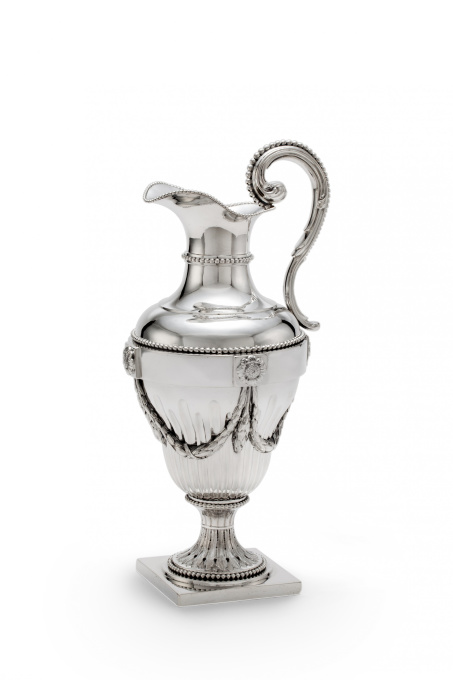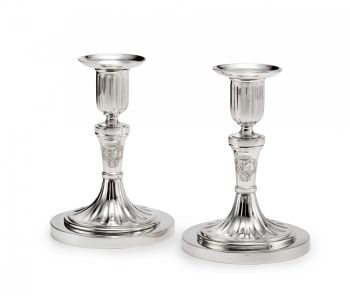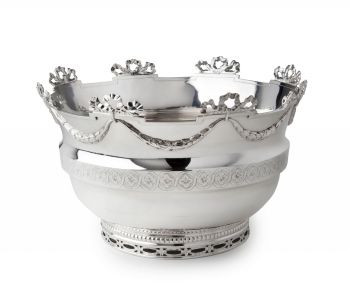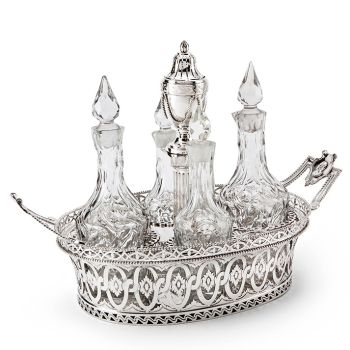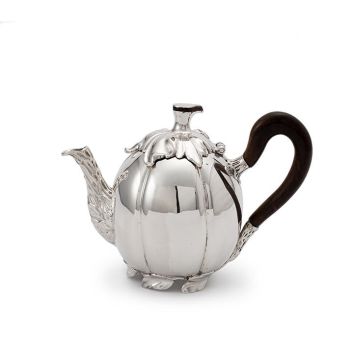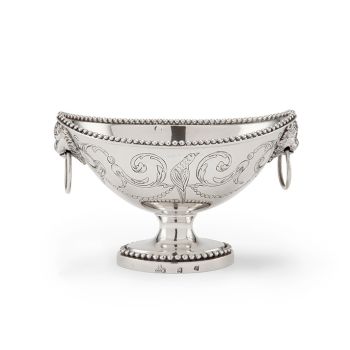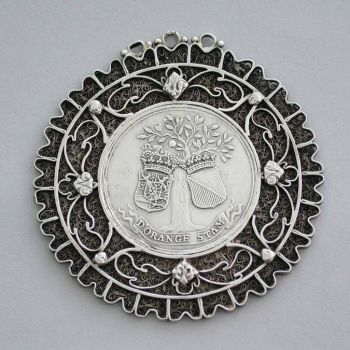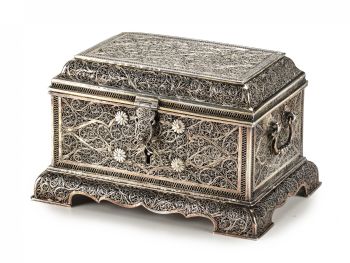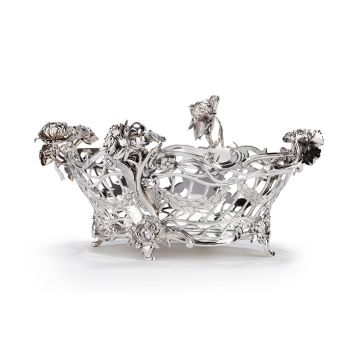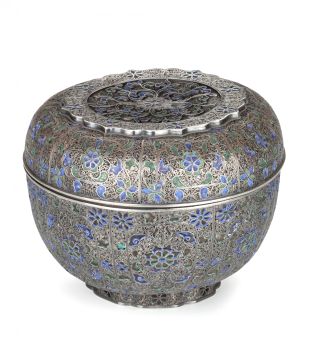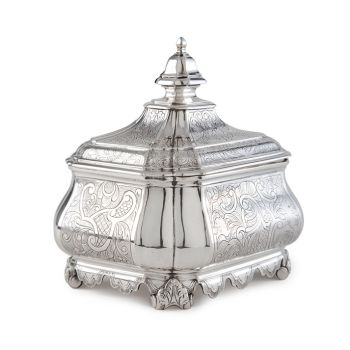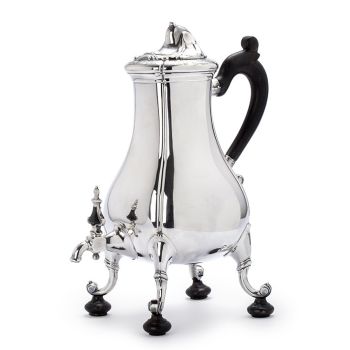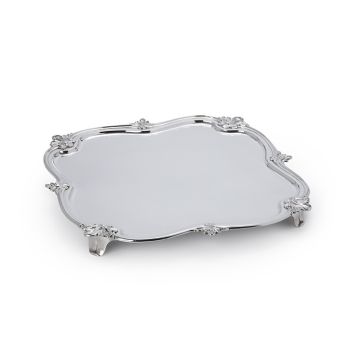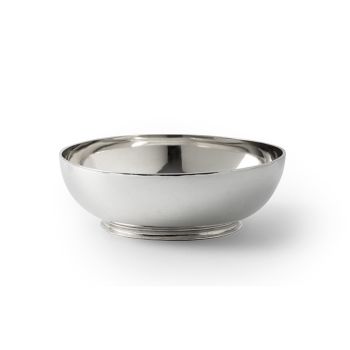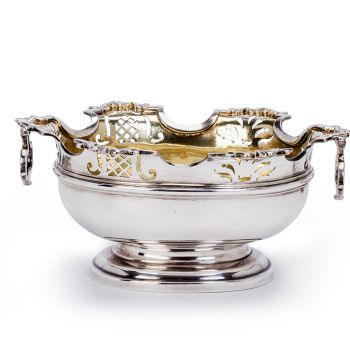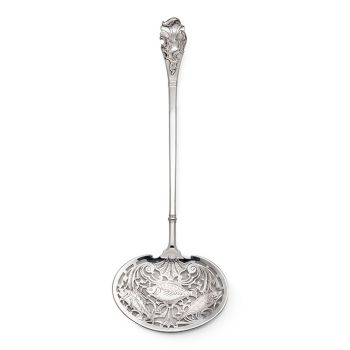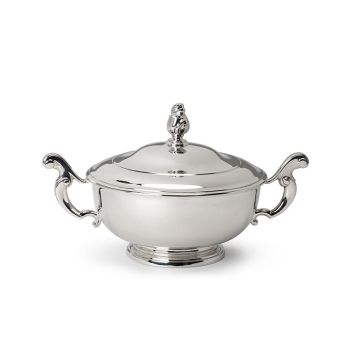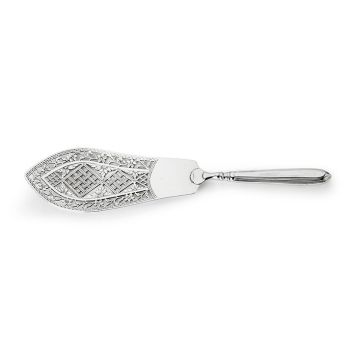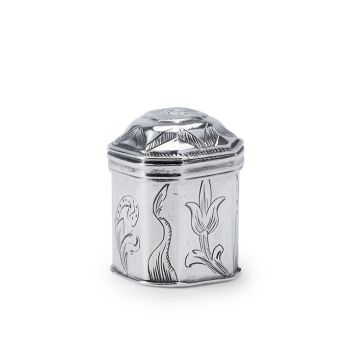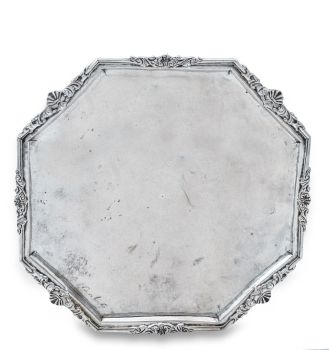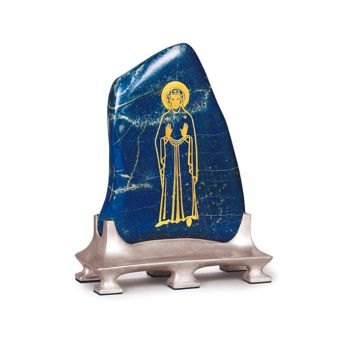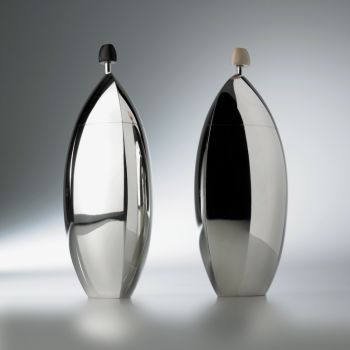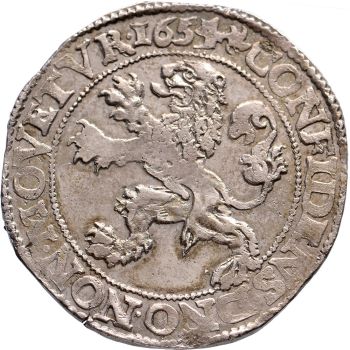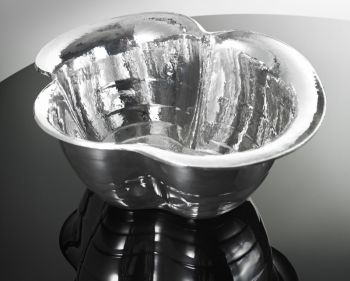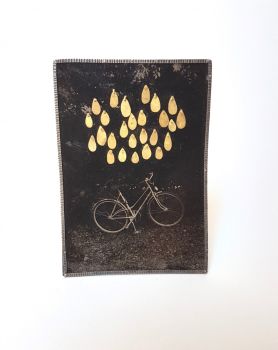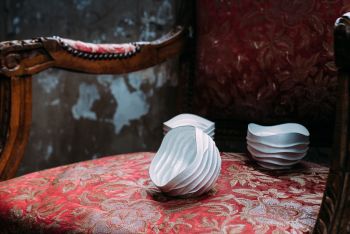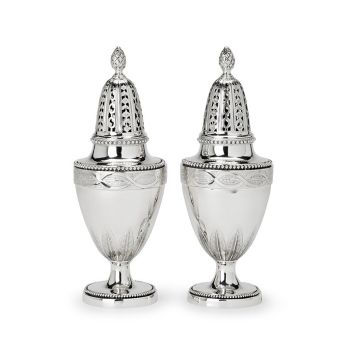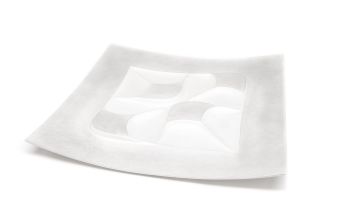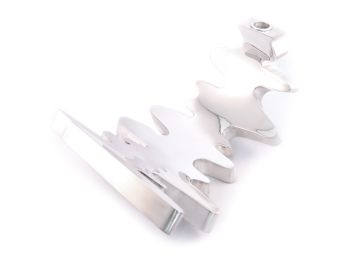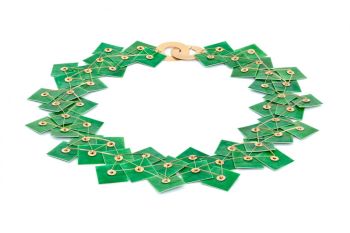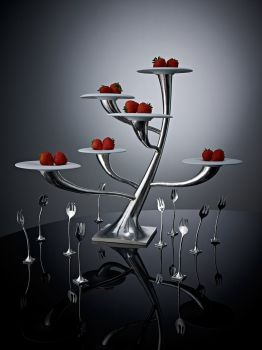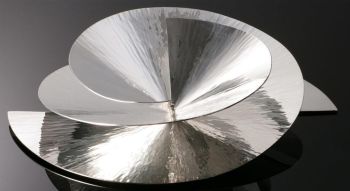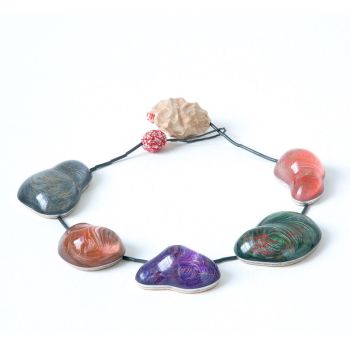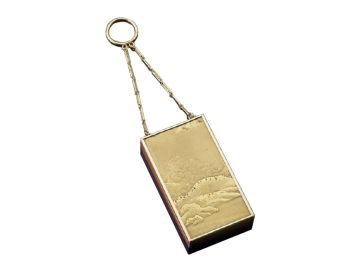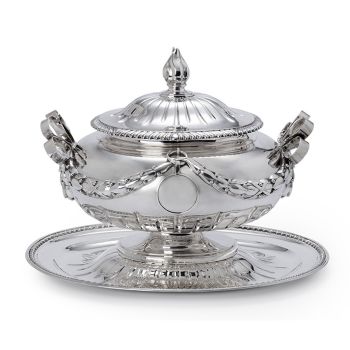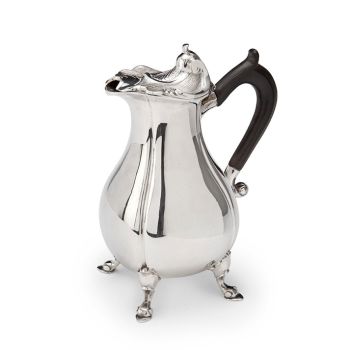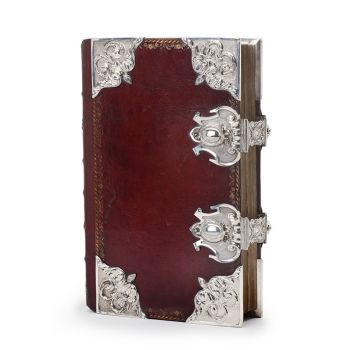Une cruche en argent hollandaise 1787
Martinus Logerath
Argent
31 cm
Prix sur demande
Jacob J. Roosjen SRI
- Sur l'oeuvre d'artDutch silver jug
Martinus Logerath, Amsterdam, 1787
1164 grams, 31 cm high
This large, elegant jug with beaded borders has a partially fluted body, applied with laurel swags, headed by flower heads. The spreading circular foot with acanthus leaves is placed on a square base. The scroll handle is applied with a sequence of beads in seizes.
Martinus Logerath, who worked as a silversmith from 1767-1814, specialized in large silverware. He was born in The Hague in 1733 as son of silversmith Johannes Logerath and Johanna Wilhelmina Buys. His brother Johannes Hermanus, also a silversmith, remained active in The Hague, whereas Martinus established his workshop in Amsterdam. From 1786 he had a workshop at Egelantiersgracht. It is known that he also worked for Willem Diemont, a retailer in Amsterdam. In 1814 he seized his activities.
From his marriage with Sophia Harthoorn, with whom he lived in Laurierstraat in 1767, the year he registered as a master silversmith, his two sons are known. Eduard Martinus, also a silversmith, and Johannes Hermanus, a retailer. Unfortunately, Martinus survived his son, leaving him heirless.
In the year 1787 Martinus Logerath manufactured a beautiful oval silver tureen, which is also part of the collection Jacob J. Roosjen. Furthermore, this collection comprises a sugar bowl by this same master, made in 1793.
Associate literature:
K.A. Citroen, Amsterdamse zilversmeden en hun merken, Amsterdam, 1975, nr. 1104.
H. Vreeken, Goud en Zilver met Amsterdamse keuren, Amsterdams Historisch Museum, Zwolle, 2003, p. 452. - Sur l'artisteMartinus Logerath est né à La Haye en 1733. Il est le fils de l'orfèvre Johannes Logerath et Johanna Wilhelmina Buys, a été formé comme orfèvre. Contrairement à son frère Johannes Hermanus, il choisit de ne pas rester à La Haye, mais opta pour Amsterdam, où il devint membre de la guilde en 1767. Avec sa femme Sophia Harthoorn, il vécut à Lauriergracht. À partir de 1786, il avait son atelier à Egelantiersgracht et était également fournisseur de Diemont, un détaillant d'objets en argent à Amsterdam. L'influence de maîtres français comme François Thomas Germain est évidente dans cette soupière. Jusqu'en 1790, les orfèvres d'Amsterdam s'inspiraient des créations françaises. On sait que Diemont, cependant, importait de l'argent anglais et, par conséquent, les maîtres d'Amsterdam se sont également inspirés des dessins anglais.
Êtes-vous intéressé par l'achat de cette oeuvre?
Artwork details
Catégorie
Style
Matériel & technique
Couleur
Related artworks
- 1 - 4 / 6
Elisabeth Treskow
Lapis lazuli afghan incrusté d'or sur un support en argent1950 - 1960
Prix sur demandeJacob J. Roosjen SRI
1 - 4 / 24- 1 - 4 / 24
Elisabeth Treskow
Lapis lazuli afghan incrusté d'or sur un support en argent1950 - 1960
Prix sur demandeJacob J. Roosjen SRI
Tilmanus Nicolaus Maastricht
Missale Romanum avec montures en argent hollandais1788 - 1792
Prix sur demandeJacob J. Roosjen SRI
1 - 4 / 12

